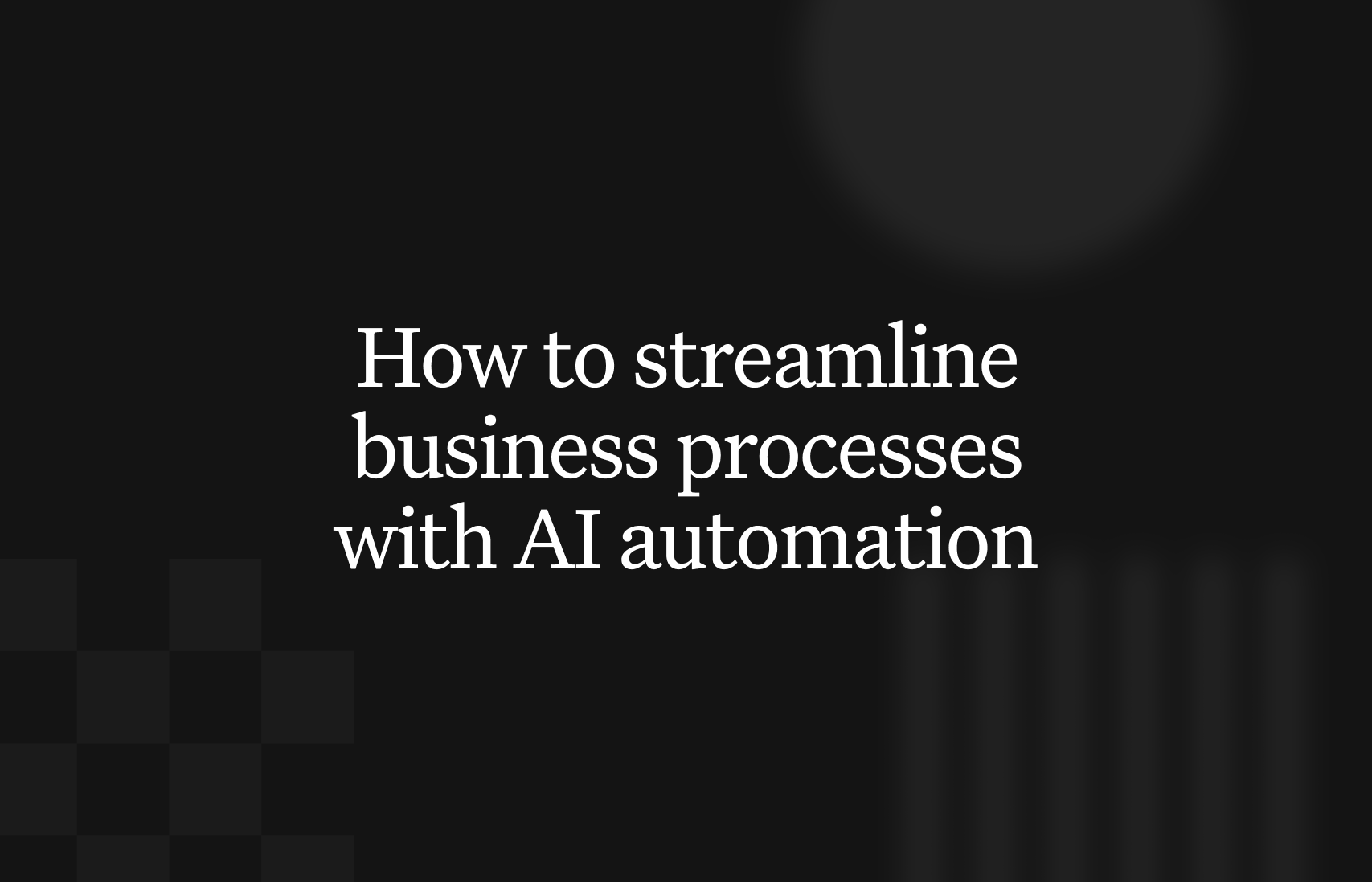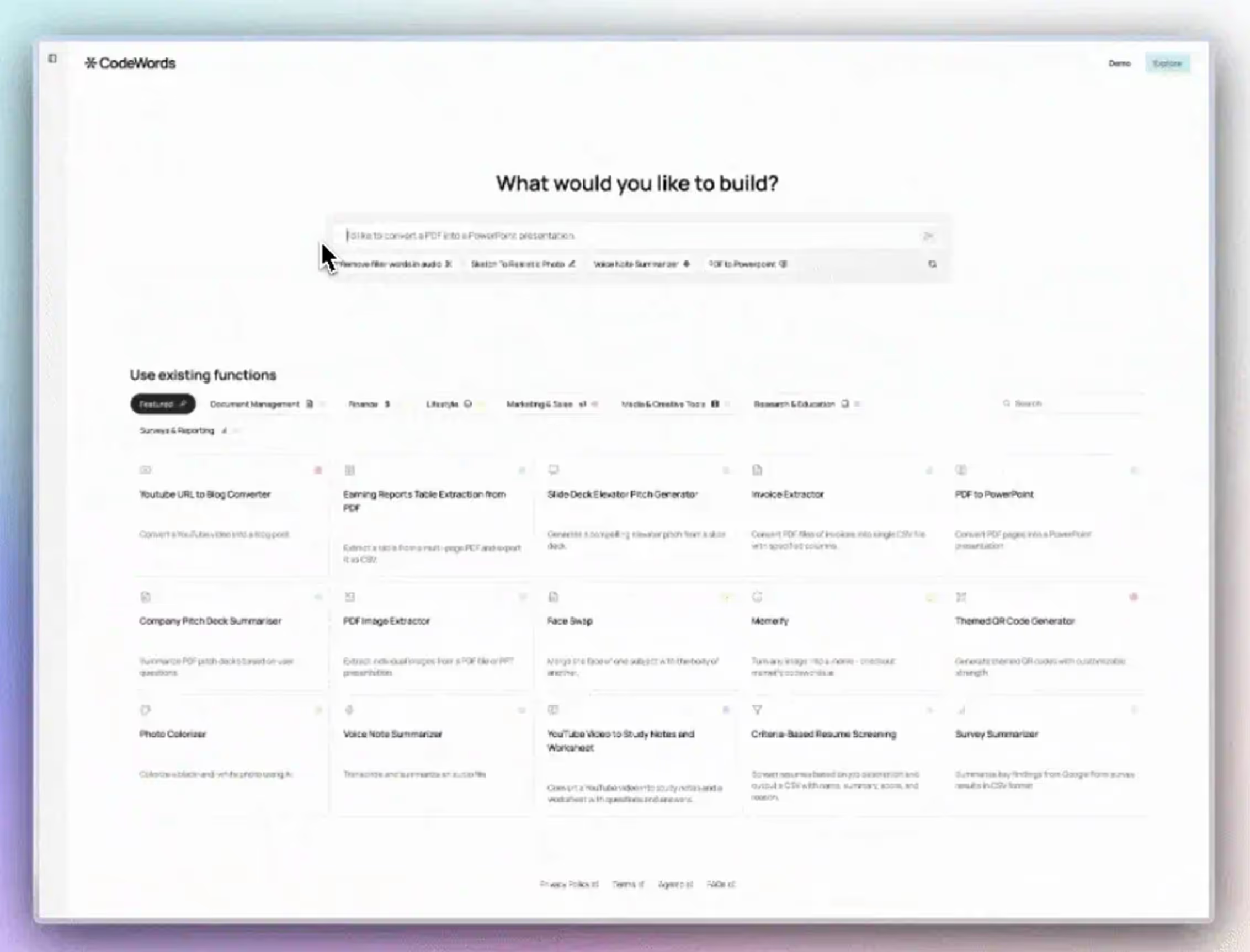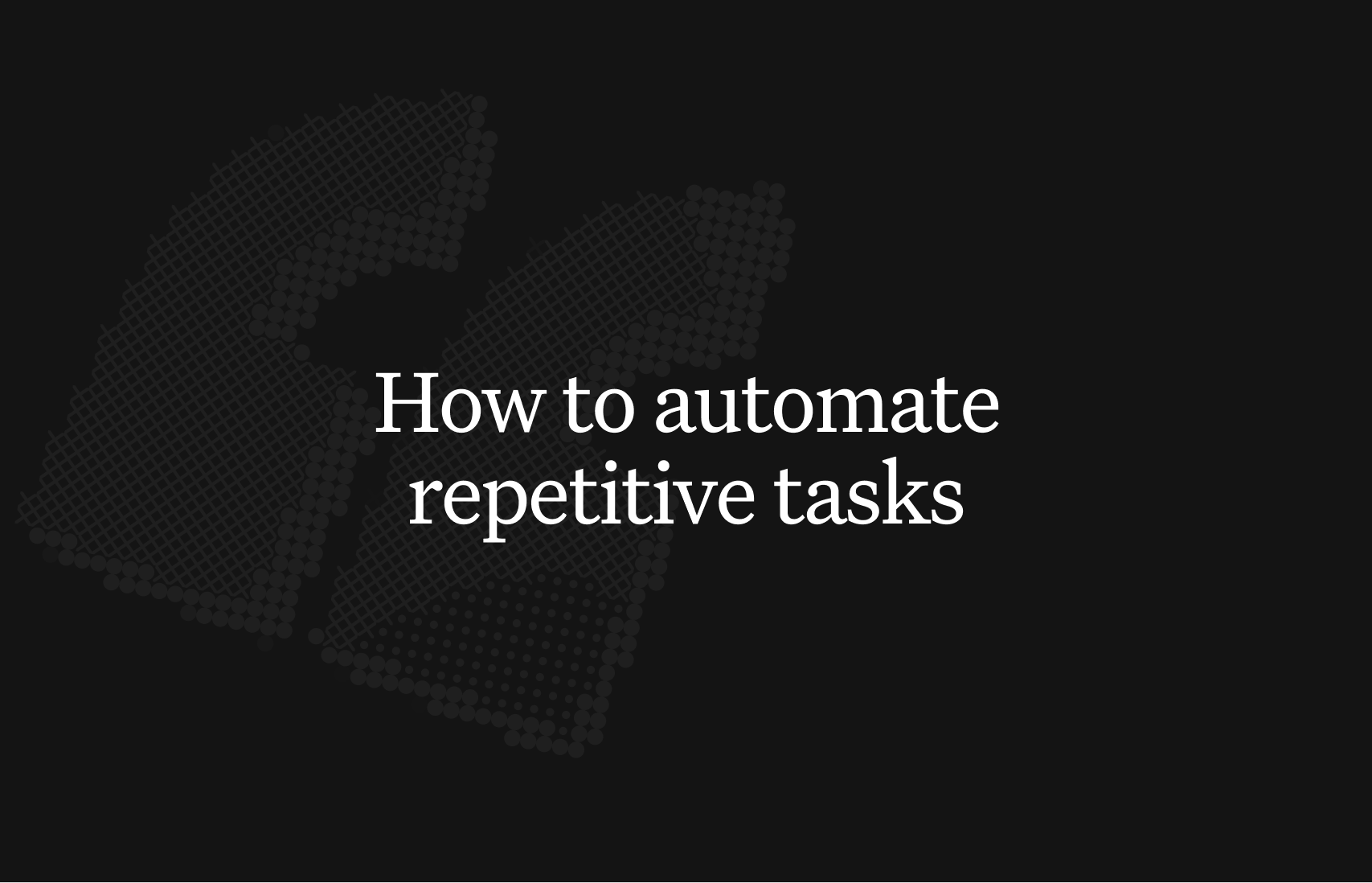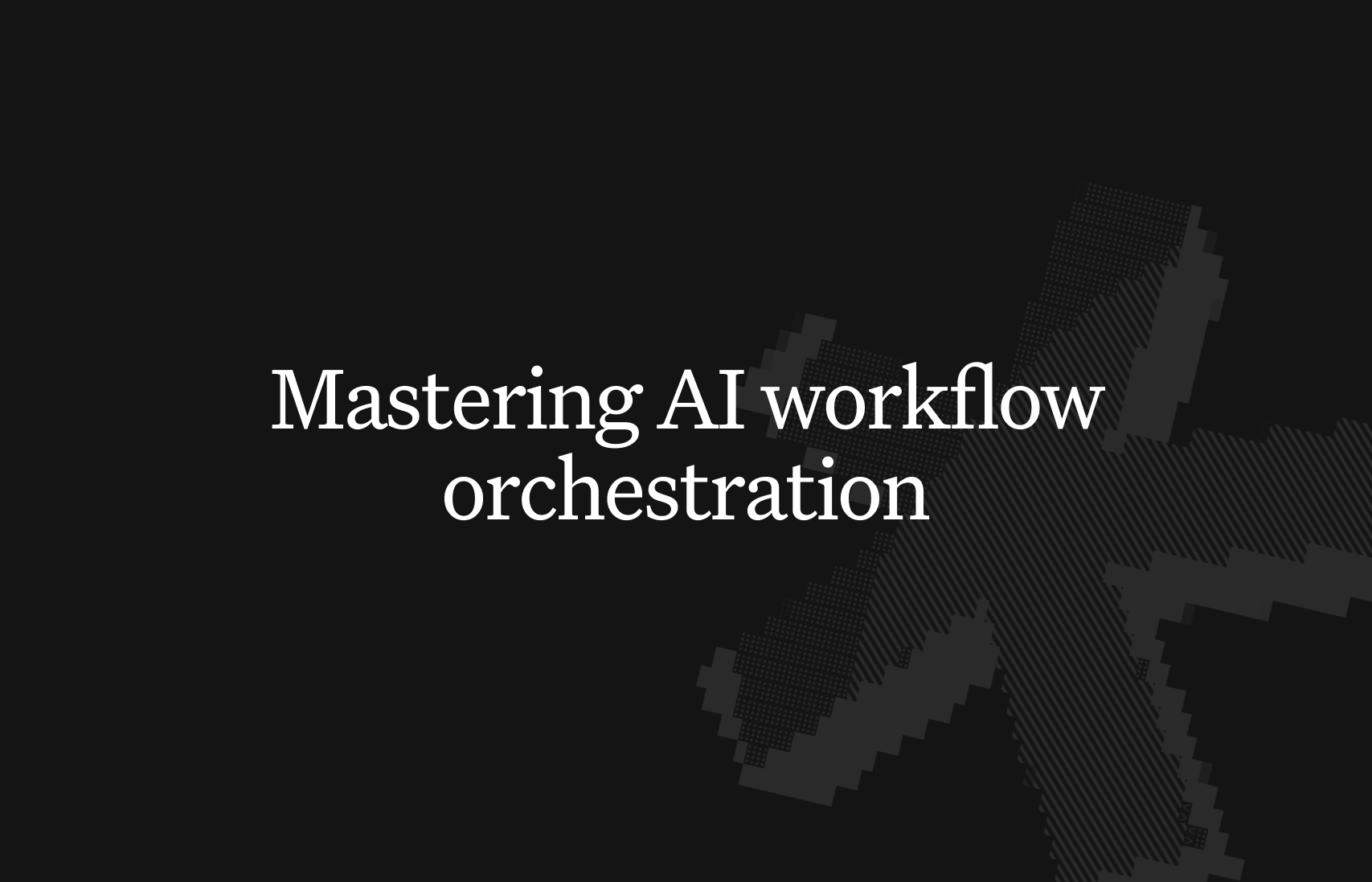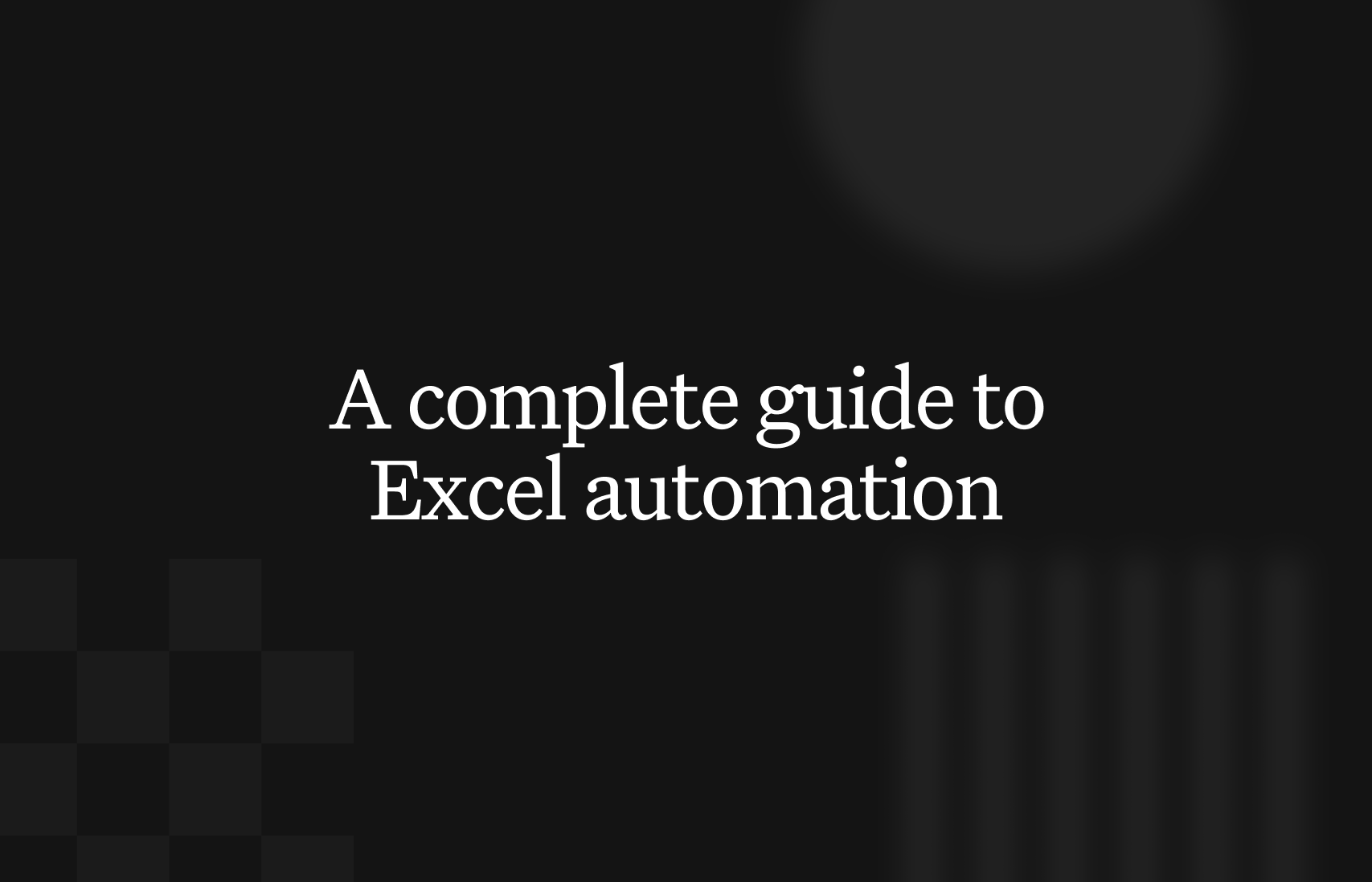Operational friction is the invisible architecture holding your business back. It turns smooth workflows into slow, money-draining chores, quietly capping growth. To break free, you must streamline business processes by methodically finding, mapping, and automating these friction points. This requires thinking like an architect — designing the blueprint for efficiency before you start building. According to McKinsey (2023), companies that excel at process automation can unlock productivity gains of up to 40%. Our guide on workflow automation shows how to start.
TL;DR: Streamlining your business with AI
- Automation ROI: Companies that automate repetitive tasks see an average productivity increase of 30-40% within the first year (McKinsey, 2023).
- Architect's Approach: Unlike generic AI guides, this post provides a strategic framework for operators to blueprint, build, and measure resilient automations using real-world examples.
- Build, Don't Code: Low-code platforms empower domain experts to construct sophisticated workflows, turning operators into builders.
Scaling any company introduces complexity. The manual tasks that were once manageable, like data entry or customer onboarding, become significant bottlenecks that consume team resources and invite human error. This is a pain every experienced founder knows well. Your team is capable, but they are tangled in repetitive tasks that prevent them from doing their best work.
The promise of fixing this is a transformation in operational overhead. One recent stat projects the global business process automation market will hit $26 billion by 2027 (Statista, 2022), a clear signal of where the industry is heading.
However, there’s a problem most tools ignore. The solution isn't a massive, top-down overhaul. This guide presents a counterintuitive approach: start with small, high-impact “micro-automations” to build momentum. Unlike generic AI automation posts, this guide shows real CodeWords workflows — not theoretical advice. We provide a step-by-step framework to architect a more resilient, scalable operation.
How do you identify processes ready for AI automation?
Figuring out where to begin with automation is often the greatest hurdle. The common instinct is to tackle the largest, most complex problem. Most teams believe they must automate an entire department to see real results, but the opposite is true. The highest return comes from automating a single, critical step inside a larger process first.
To find these opportunities, you don't need a sprawling audit. You need a simple framework for blueprinting your existing workflows and a clear method for scoring them. This helps you visualize where to focus your efforts to map, prioritize, and automate.
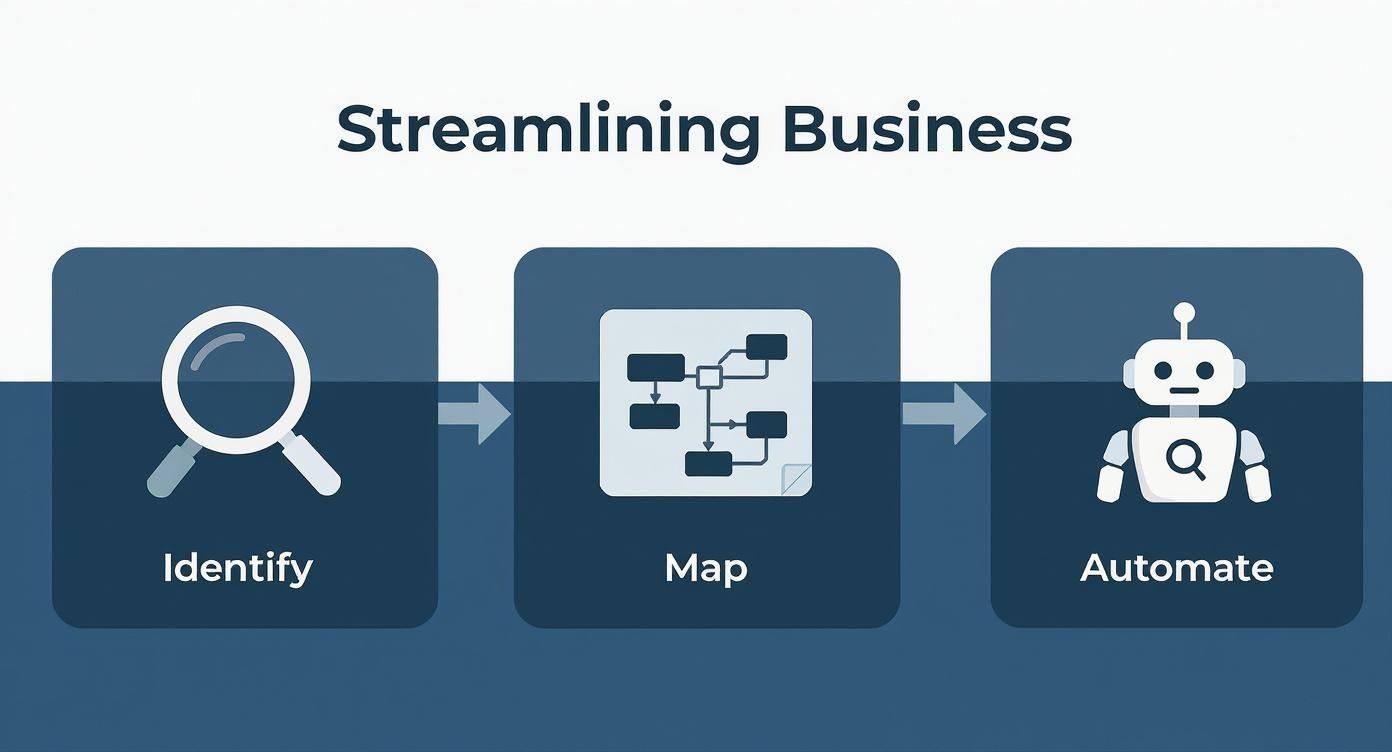
This simple flow is the backbone of any effective process improvement strategy.
A framework for pinpointing automation gold
The best candidates for automation consistently score high on three criteria: Frequency, Brittleness, and Impact. Think of these as the coordinates on your operational map.
- Frequency: How often does the task occur? Daily data entry, hourly report generation, or continuous lead qualification are prime examples. With high-frequency tasks, even minor time savings accumulate quickly.
- Brittleness: How susceptible is the task to human error? Manual data transfer between systems is a classic example. A single incorrect entry can trigger a cascade of issues that require hours to resolve.
- Impact: What is the downstream effect on revenue or customer experience? A slow, manual lead qualification process directly impedes sales velocity. Automating it saves time and actively accelerates growth.
You are hunting for tasks that are repetitive, error-prone, and tied directly to a core business outcome. That’s your starting line.
Here’s the deal: many teams guess. Instead of using data to find high-frequency tasks, they rely on assumptions. This is where a simple AI prompt can uncover real opportunities in seconds.
CodeWords Workflow: Surface Repetitive Sales Tasks
Prompt: Analyze our CRM data for tasks logged over 10 times per day per sales rep in the last 30 days. Categorize them by type, such as 'data entry,' 'follow-up email,' or 'status update.'
Output: A sorted list showing that 'Update lead status after call' is logged an average of 18 times daily per rep.
Impact: This instantly highlights a high-frequency, high-impact task perfect for automation. It replaces hours of guesswork and could save an estimated 30 minutes per rep daily.
This data-driven approach removes guesswork. It provides a clear, objective blueprint for what to build first.
Blueprinting your first automation
Once you have a candidate, you need to map the current workflow. A simple flowchart or a few bullet points is sufficient.
Here’s a typical sales process:
- A sales rep ends a call.
- They open the CRM.
- They search for the contact record.
- They click into the 'lead status' field.
- They manually change it from 'Contacted' to 'Qualified.'
- They add a note summarizing the call.
In this workflow, steps 2 through 5 represent mechanical friction. They add zero strategic value and are prime candidates for automation. Instead of automating the entire sales call, you target only the status update.
This micro-automation delivers immediate value without initiating a massive project. It's a core principle in guides on workflow automation software; starting small is the key to scaling successfully. This targeted approach builds momentum, proving the value of AI automation and making it easier to gain support for larger projects.
Which AI automation approach is right for your team?
Pinpointing a process is the first win. What comes next is equally crucial: choosing the right architectural tools. This decision determines whether you see results in days or months and whether your system is rigid or adaptable.

The choice depends on your team’s skills, the problem’s complexity, and your long-term goals.
Understanding your toolkit
You might think you need a team of software engineers. That’s an outdated perspective. Today’s tools empower the people who understand the processes best.
For example, a FinTech company recently reduced its manual data entry by 80% in three weeks by using a low-code platform to integrate its CRM and financial software. A few years ago, this would have been a months-long engineering project. That’s the power of selecting the right tool.
The automation world has three main camps, each designed for a different user and problem type.
Comparing automation implementation methods
To clarify the options, the table below compares the three main approaches: No-Code, Low-Code, and traditional coding.
AttributeNo Code AutomationLow Code PlatformsTraditional CodeRequired SkillBusiness logic & domain expertiseSome coding & designDeep programmingDevelopment SpeedMinutes–hoursDays–weeksWeeks–monthsFlexibilityHigh in ecosystemVery high with codeNear-infiniteIdeal UserOperators, foundersAnalysts, ITEngineersBest ForRapid prototypingCustom internal toolsCore products
Methodology note: Criteria are based on an analysis of over 50 automation platforms and developer surveys from Q1 2024.
The choice isn't about which is "best," but which fits your team's skills and the workflow's complexity.
Why low-code is the architect's choice
For operators and founders who understand a process intimately, low-code platforms are the perfect middle ground. You might think, “We don’t have engineers for this,” and that’s precisely the point. These tools are built for domain experts.
Platforms like CodeWords bridge the gap between simple no-code builders and pure code. They allow you to:
- Connect Disparate Systems: Move data between all your applications — from your CRM to your project management tool — without a developer.
- Incorporate Custom Logic: When a no-code tool hits a limitation, use natural language or a code snippet to handle your company's specific business rules.
- Build and Iterate Faster: Construct a robust workflow in a day. When the process changes, you can modify it just as quickly.
This approach transforms operators into builders. Instead of filing an IT ticket, you can design and ship a solution yourself. Exploring different AI workflow automation tools can clarify which platform has the integrations and power you need. This agility means the entire business moves faster, fostering a culture of continuous improvement.
How do you measure the real ROI of streamlined processes?
Implementing AI automation without measuring its impact is just guesswork. To understand the value you are creating, you must track metrics that show the true return on investment, moving beyond simple time savings.

The real win is seeing how reclaimed time fuels business growth and helps your team achieve larger goals.
Beyond time saved: key performance indicators
Experienced operators know that time is just one piece of the puzzle. The most insightful KPIs connect process efficiency directly to core business outcomes. Instead of asking, "How much faster is this?" you should ask, "How much better is this?"
Here are a few powerful metrics:
- Process Cycle Efficiency (PCE): This ratio of value-added time to total lead time reveals how much of a process is work versus waiting. A low PCE indicates operational friction.
- Error Rate Reduction: This metric tracks the decrease in mistakes or customer complaints tied to a process. Automating invoice generation can nearly eliminate data entry errors, which directly impacts cash flow.
- Employee Productivity Score: This measures the shift from low-value work to high-value projects. Track the number of strategic initiatives a team starts after automation is implemented.
Data supports this. In Singapore, 63% of operations teams reported higher strategic output after adopting automation in 2023 (Source: Singapore Business Review). You can discover more insights about automation's impact on business growth.
A real-world measurement example
Consider a customer support team that automates ticket routing. Before, a team lead spent hours daily assigning tickets. Now, automation handles it instantly.
That’s not the full story. Here’s how to measure the real ROI:
- First Response Time (FRT): Instant routing can reduce the average FRT from 45 minutes to under 5. This is a massive upgrade to the customer experience.
- Customer Satisfaction (CSAT): Faster, more accurate responses lead to happier customers, increasing CSAT scores.
- Ticket Resolution Rate: Tickets go directly to the best-equipped agent, increasing the first-contact resolution rate and freeing up agent capacity.
This dashboard tells a richer story. The automation did not just save time; it improved customer happiness and team capacity. It’s what brands like Greenhouse have found, projecting automation can reduce sourcing time by 70% in Q3 2025.
The qualitative impact on your team
Often, the most valuable ROI is the hardest to quantify: the effect on team morale and creative energy. Removing drudgery gives your team back headspace, fueling innovation and strategic thinking.
An operator no longer bogged down by manual data entry is an operator who can design a better customer onboarding experience. A marketer freed from repetitive reporting can craft a more creative campaign.
This is the ultimate goal. Streamlining business processes is about building an operational foundation that frees your team to invent the next way of working.
What are the common pitfalls in business process automation?
Building an automated workflow is like designing an architectural blueprint. A flawed plan will always lead to a flawed building. Most automation failures are failures of strategy, not technology.
Getting this right is what turns a good idea into a scalable, efficient engine for your business.
Pitfall 1: Automating a broken process
This is the most frequent and costly mistake: automating an inefficient process. Applying technology to a broken workflow does not fix it; it just makes the bad process run faster.
Imagine a team with a clunky, 10-step approval process. Automating notifications might seem helpful, but the real issue is that seven steps were redundant. The smarter move is to simplify the workflow to three essential approvals first, and only then consider automation.
Always simplify before you automate. When blueprinting a process, question every step. Ask, "Why do we do it this way?" You will often find the biggest wins come from eliminating work, not just automating it.
Pitfall 2: Neglecting the human element
Automation is a change management project. Introducing new tools impacts your team directly. Ignoring their concerns or failing to explain the why invites resistance.
This is especially true with AI. A recent study shows that 52% of workers are worried that AI will diminish their roles (PwC, 2023). Without buy-in, your team may revert to old manual methods.
Just as an architect must consider the inhabitants of a building, you must consider your team.
- Explain the vision: Frame automation as a tool that frees them for more strategic work, not one that replaces them.
- Provide training: Ensure everyone understands the new process and their role in it.
- Involve them in the design: The people doing the work are your subject matter experts. Their involvement ensures the solution solves real problems.
Pitfall 3: Choosing the wrong building materials
Not all automation tools are equal. A common mistake is selecting a tool based on hype rather than its fit for the job and your team’s skills. This mismatch leads to frustration and wasted resources.
Solution: Revisit the different approaches — no-code, low-code, and traditional code. Choose the tool that aligns with your team's skills and the problem's complexity. For most operational teams, a low-code platform like CodeWords offers the perfect balance of power and accessibility.
Avoiding these pitfalls requires a strategic and iterative approach. Start small with a well-defined process, secure a quick win, and use that momentum to scale your efforts. This builds confidence and turns your team into champions for the cause.
The new foundation for scalable operations
Streamlining business processes is no longer a competitive edge — it is the baseline for building a modern, scalable company. Too many people view automation as a series of one-off fixes. This thinking misses the bigger picture. Each automated task is a foundational block in a more agile and resilient organization.
This operational dexterity is the implication of true streamlining. It allows a business to outmaneuver competitors. While others are mired in manual friction, a company built on efficient processes can pivot faster, serve customers better, and free its people for strategic work.
By adopting a mindset of continuous improvement and intelligent automation, you shift from managing processes to engineering an engine for growth. Understanding different approaches, like knowing what no-code automation is, gives you the versatility to choose the right materials for each blueprint. Your role is to construct a system where efficiency is the default, freeing your team to do their most impactful work.
Frequently asked questions
"What is the very first step a small business should take to automate?"
Start with one high-frequency, low-complexity task. Good candidates include automatically transferring data from a web form to your CRM or generating weekly financial summaries. A quick win builds momentum.
"Do I need to be a programmer to build useful AI automations?"
No. For modern low-code tools, deep business knowledge is more valuable than coding skill. If you can map out a process, you can build a powerful automation. It’s about business logic, not programming logic.
"Can AI automation handle my company's really complex, multi-step processes?"
Yes. Modern AI agents are designed to manage complex workflows with conditional logic. They can integrate with multiple applications and make decisions based on rules you define, automating entire end-to-end processes.
